Hiring the right personal trainers can transform your gym's member retention, revenue, and reputation. The wrong hires drain your budget and create member dissatisfaction that spreads quickly through word-of-mouth.
The key to successful trainer hiring lies in evaluating both technical qualifications and cultural fit, as trainers directly represent your gym's standards and values to every client they serve. Your trainers shape the member experience more than any other staff position. They build relationships that determine whether clients renew memberships or recommend your facility to others.
The difference between average and exceptional trainers shows up in your bottom line within months. You need a systematic approach that identifies candidates who combine professional expertise with the interpersonal skills that keep members engaged and progressing toward their goals.
Key Criteria for Selecting the Ideal Personal Trainer
Selecting the right personal trainer requires evaluating specific qualifications, expertise areas, and communication abilities that align with your gym's unique member base and training philosophy. The most successful hires demonstrate both technical competence and the interpersonal skills necessary to motivate diverse clients effectively.
1) Understanding Your Gym's Needs and Audience
Your gym's member demographics and training focus determine the type of personal trainer you should hire. A boutique fitness studio specializing in yoga requires different expertise than a CrossFit box or traditional strength training facility.
Analyze your current member base to identify common fitness goals, age ranges, and experience levels. Members seeking injury prevention and rehabilitation need trainers with corrective exercise backgrounds. Younger demographics might prefer high-intensity functional training specialists.
Consider your gym's training philosophy and brand identity. Some facilities emphasize customized workout plans and one-on-one attention. Others focus on small group training or hybrid coaching models.
Evaluate existing gaps in your trainer roster. If you have strength training covered but lack flexibility specialists, prioritize candidates with yoga or mobility certifications. Group fitness instructors can expand your class offerings while providing personal training services.
Match trainer specializations to member demands. Track which training styles generate the most interest through consultations and class attendance patterns.
2) Essential Certifications and Qualifications
Valid certifications demonstrate a trainer's commitment to professional standards and client safety. Not all certifications carry equal weight in the fitness industry.
Priority certifications include:
- ACSM (American College of Sports Medicine)
- NASM (National Academy of Sports Medicine)
- NSCA (National Strength and Conditioning Association)
- ACE (American Council on Exercise)
CPR and First Aid certification is non-negotiable for all personal trainers. These credentials must remain current throughout employment.
Educational background in exercise science, kinesiology, or related fields provides deeper knowledge of human anatomy and program design principles. Degree requirements vary by gym type and clientele expectations.
Specialty certifications add value for specific populations. Corrective exercise specialists serve members with movement limitations. Certified strength and conditioning specialists excel in performance training environments.
Continuing education requirements show dedication to professional growth. Trainers should actively pursue workshops, seminars, and additional certifications relevant to your gym's services.
3) Evaluating Fitness Expertise and Specializations
Technical knowledge separates competent trainers from exceptional ones. Your evaluation process must assess both theoretical understanding and practical application skills.
Exercise science fundamentals include anatomy, physiology, and biomechanics knowledge. Trainers should explain muscle function, movement patterns, and adaptation principles clearly.
Program design abilities determine training effectiveness. Candidates must demonstrate skill in creating progressive, periodized programs for various fitness levels and goals.
Assessment competencies enable trainers to evaluate client starting points and track progress. Look for experience with body composition analysis, movement screens, and fitness testing protocols.
Specialization areas should align with member needs. Specializations include:
- Strength Training General fitness
- Compound movements
- Progressive overload
- CrossFit High-intensity group training
- Olympic lifts, metabolic conditioning
- Flexibility
- Corrective Exercise Injury recovery
4) Assessing Interpersonal and Communication Skills
Communication skills directly impact client retention and training success. Technical knowledge means nothing without the ability to teach, motivate, and build relationships effectively.
Instruction clarity determines how quickly clients learn proper form and techniques. Trainers must break down complex movements into understandable steps while providing clear verbal and visual cues.
Motivational abilities keep clients engaged during challenging workouts. Look for trainers who balance encouragement with realistic expectations and adapt their approach to different personality types.
Active listening skills help trainers understand client concerns, preferences, and limitations. The best personal trainers ask thoughtful questions and modify programs based on client feedback.
Empathy and patience create comfortable learning environments. Trainers working with beginners or special populations need extra sensitivity to client insecurities and physical limitations.
Professional boundaries maintain appropriate trainer-client relationships while building trust and rapport. Candidates should demonstrate understanding of ethical guidelines and confidentiality requirements.
Conflict resolution abilities help address client complaints or scheduling issues professionally. Trainers often serve as the primary gym contact for members, making these interpersonal skills essential for overall member satisfaction.
The Hiring Process and Ensuring a Good Fit
Finding the right personal trainer requires a structured hiring process that evaluates both technical expertise and cultural alignment. Success depends on thorough screening, practical skill assessment, and comprehensive reference verification.
Creating Effective Job Listings and Sourcing Candidates
Your job listing determines the quality of candidates you attract. Write clear descriptions that specify required certifications, experience levels, and specialties like weight loss or strength training.
Include specific requirements such as CPR certification, liability insurance, and experience with diverse fitness goals. Mention your gym's training philosophy and client demographics.
Essential elements for trainer job postings:
- Required certifications (NASM, ACSM, ACE)
- Experience with specific populations
- Specialization areas (rehabilitation, athletic performance)
- Technology proficiency for workout plan creation
- Communication skills for client accountability
Post on fitness-specific job boards like IDEA Health & Fitness Association and ACE's career center. These platforms attract certified professionals actively seeking trainer positions.
Use social media recruiting on fitness-focused groups and LinkedIn. Many experienced trainers network within these communities and may not actively browse general job boards.
Employee referrals often yield high-quality candidates. Your current trainers understand your gym's culture and client expectations, making their recommendations valuable.
Interviewing and Assessing Practical Skills
Structure interviews to evaluate both personality and technical competence. Ask candidates to demonstrate their ability to design workout plans and modify exercises for different fitness levels.
Conduct practical assessments where candidates lead mock training sessions. This reveals their coaching style, communication clarity, and adaptability to client needs.
Key interview questions:
- How do you handle clients who aren't seeing results?
- Describe your approach to creating personalized workout plans
- How do you maintain client accountability between sessions?
- What's your experience with injury modifications?
Observe how candidates explain complex movements in simple terms. Effective trainers translate technical knowledge into accessible guidance that motivates clients toward their fitness goals.
Test their ability to adapt sessions on the spot. Present scenarios where clients have limitations or changing needs to assess problem-solving skills.
Checking References and Past Performance
Contact previous employers and clients to verify the candidate's track record. Ask specific questions about client retention rates, safety records, and professional conduct.
Inquire about client satisfaction levels and the trainer's ability to help members achieve fitness goals. References should confirm the candidate's reliability and professionalism.
Reference check priorities:
- Client safety record and injury prevention
- Retention rates and client satisfaction
- Punctuality and professional boundaries
- Continuing education efforts
- Conflict resolution abilities
Verify all certifications directly with issuing organizations. Ensure CPR and first aid certifications are current and that continuing education requirements are being met.
Ask about the trainer's adaptability to different training environments and client personalities. This insight helps predict cultural fit within your gym.
Onboarding, Trial Periods, and Supporting Trainer Success
Implement a structured onboarding process that introduces new trainers to your gym's systems, policies, and client management approach. This foundation ensures consistency in service delivery.
Establish trial periods lasting 60-90 days with clear performance metrics. Monitor client feedback, session attendance, and the trainer's integration with existing staff.
Provide ongoing support through mentorship programs pairing new hires with experienced trainers. This accelerates learning and maintains service quality standards.
Trial period evaluation criteria:
- Client retention and satisfaction scores
- Safety incident reports
- Professional development participation
- Team collaboration effectiveness
Set up regular check-ins during the first months to address challenges and provide feedback. Early intervention prevents small issues from becoming major problems.
Create systems for continuous education and skill development. Support trainers in pursuing additional certifications and attending workshops to enhance their expertise and career growth.
Looking to hire a fitness coach? Post a job on Barbell Jobs today!


